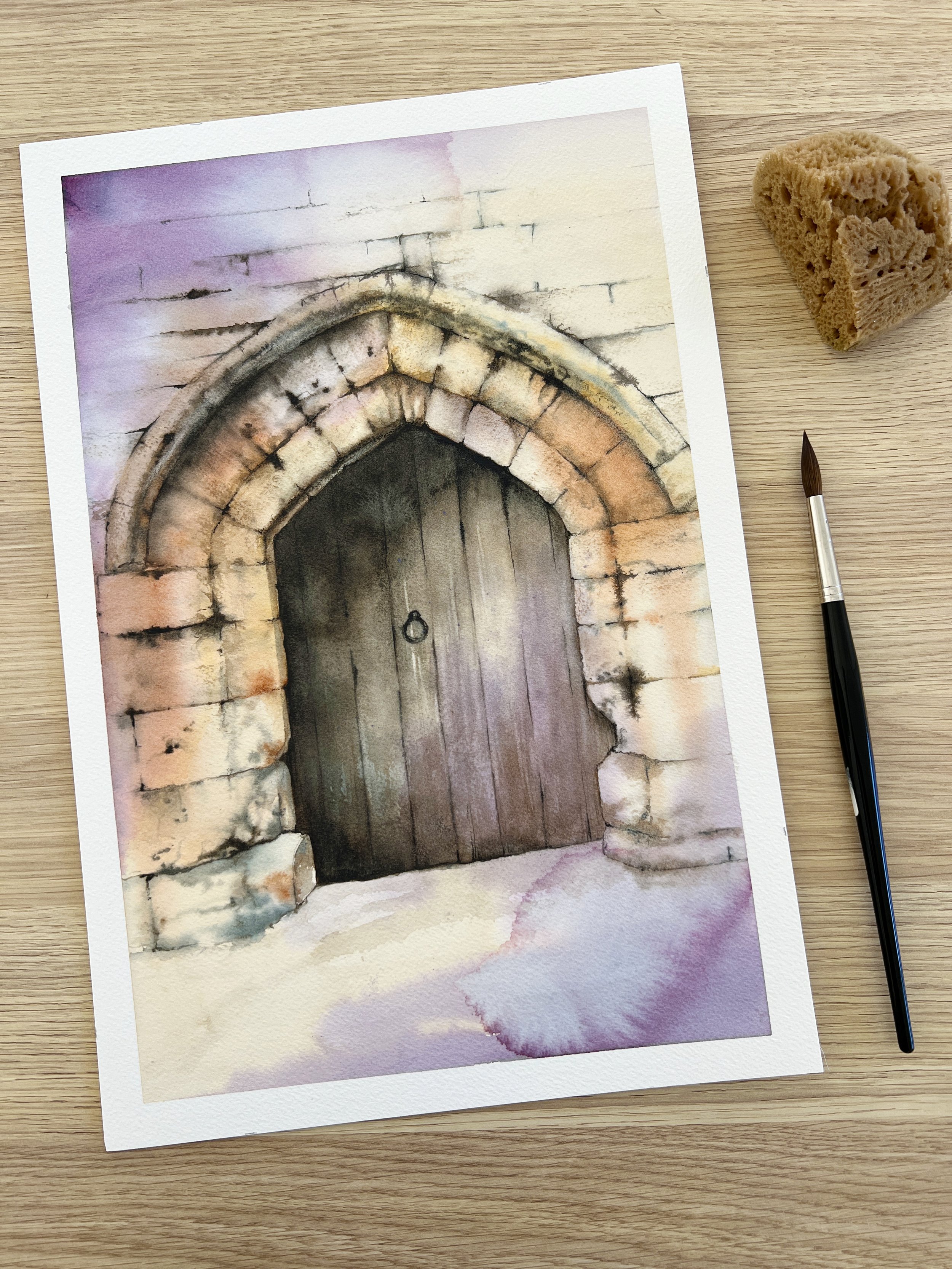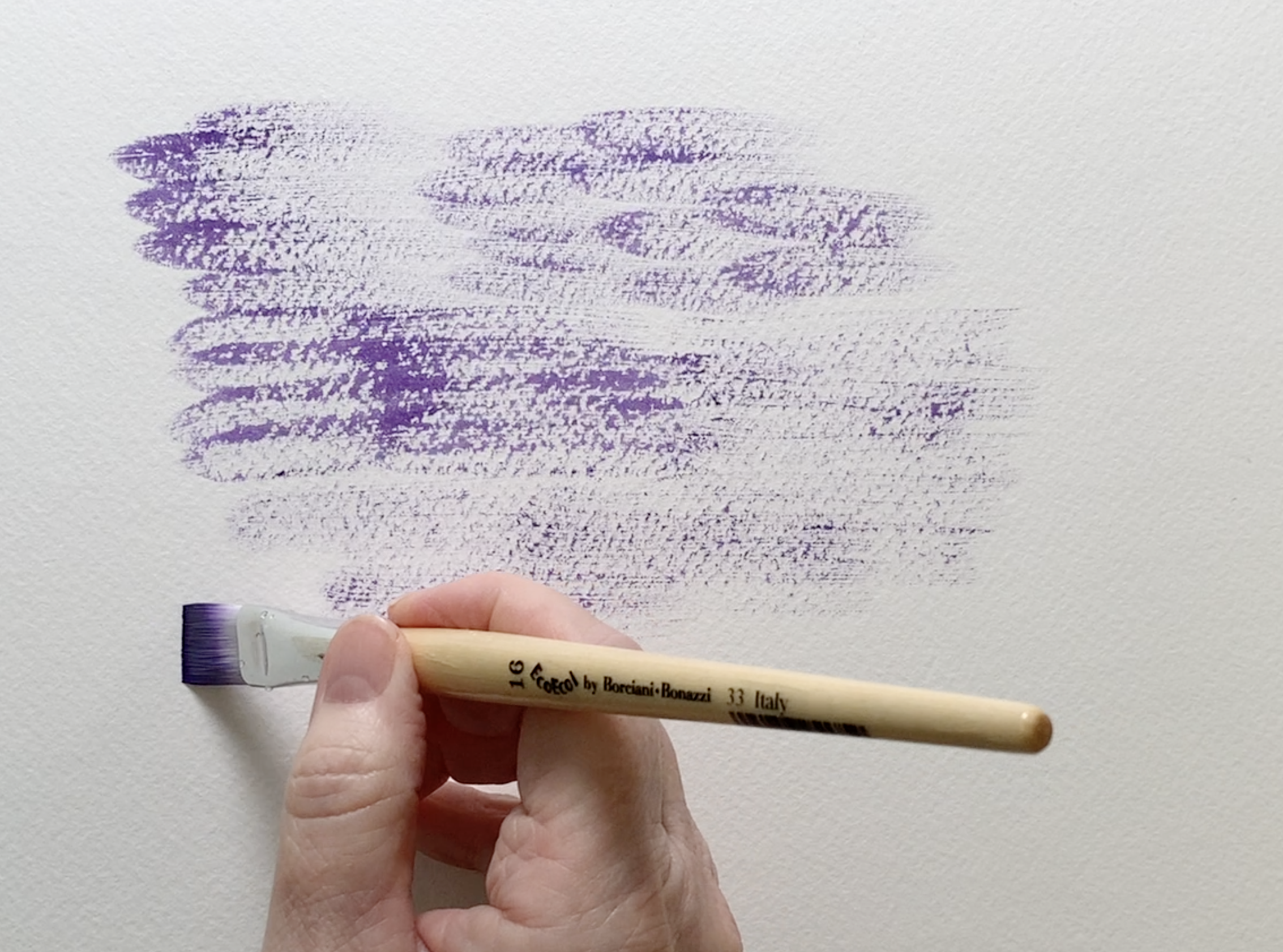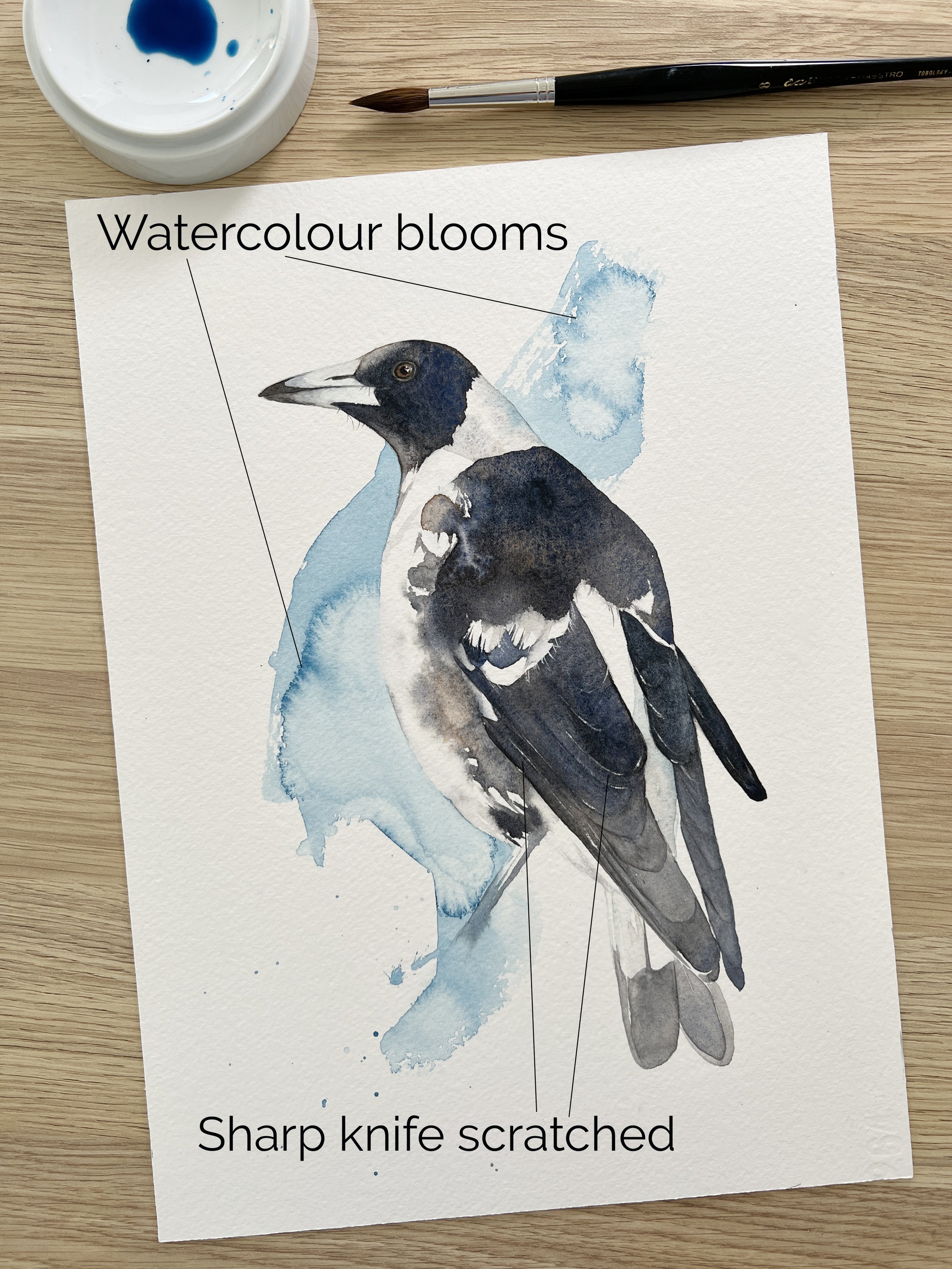9 Watercolour Texture Techniques
Unlocking the world of watercolour painting is like stepping into a place where colours dance, brushstrokes come alive, and emotions take form on paper. While the delicate washes and translucent layers of watercolour are captivating on their own, adding texture to your paintings can elevate them to new heights. In this blog post, I’ll dive into the realm of watercolour visual texture techniques, exploring nine creative methods to infuse your artwork with depth, dimension, and visual interest.
What is Visual Texture in a Watercolour Painting?
Visual texture in a watercolour painting refers to the illusion of different surface qualities that are created through the use of various brushstrokes, colours, and techniques. It adds depth, dimension, and interest to the artwork. Artists can use textured areas to create focal points and draw the eye to specific areas of the painting. Texture can be used to convey emotions and enhance the expressive qualities of a watercolour painting.
How do you Create Visual Texture in a Watercolour Painting?
By employing various brushstrokes, exploring different techniques such as dry brushing, splattering, and salt application, as well as experimenting with granulating paints and unconventional tools like sponges and scraping implements, artists can create visual textures that bring their watercolour paintings to life.
Dry Brush Technique
You can create texture in your painting using the drybrush technique.
The dry brush technique is an expressive approach to painting that produces a random effect.
Mastering this technique takes practice, and the moisture level in the brush is crucial. It should be wet but not excessively. Dab the brush on a cloth to remove excess paint.
Too much moisture transfers excessive paint to the paper, while excessive dryness causes the brush to skip over the paper. Finding the right balance is challenging.
Applying too much pressure results in an undesired paint release. Maintain swift brush movement to avoid excessive paint on the paper and always use a larger brush size.
Dry brushing creates distinctive marks on the paper. The paint sits on higher areas and selectively skips over lower areas, creating a textural contrast.
Splattering or Spraying
You can try some splattering or spraying effects with your brush.
Load a brush with watercolour paint and use your finger or another brush to flick or tap the loaded brush over the paper. This technique creates random speckles or splatters, adding texture and visual interest. Some artists use a toothbrush to create splattered effects.
You can also try using some gouache (opaque watercolour paint) to add some splatters towards the end of a painting.
Using salt on a watercolour painting
Sprinkling salt onto a wet watercolour wash can add texture to a painting in an interesting way. As the salt comes into contact with the damp paint, it absorbs moisture and creates irregular patterns and granulated effects.
The size, shape, and type of salt used can influence the resulting texture. Coarser salts tend to create larger and more pronounced effects, while finer salts may produce delicate and subtle textures.
The salt is typically sprinkled onto the wet wash and left undisturbed until the paint fully dries. Timing is crucial when adding salt because if the wash is too wet or too dry, the result will be ineffective. Once the painting is dry, the salt is gently brushed off, revealing the textured areas that have been formed. I have a video where I demonstrate how to use salt in a watercolour painting.
Using salt to create texture
Watercolour Blooms
Creating deliberate watercolour blooms is a great way to add interest and texture to your watercolour paintings. Some artists call them cauliflowers, back runs or blossoms.
Watercolour blooms occur when additional wet paint or water is applied to an area of the paper that has already been painted and is still damp. The water or paint spreads outward, pushing the existing pigment away and creating a lighter area or "bloom." This effect can be quite beautiful and it can add a sense of movement and spontaneity to a watercolour painting.
I use them all the time to create texture in my watercolour paintings. I have made a video demonstrating how to both avoid them and create them.
I added some deliberate blooms to the background of this Betta Fish painting.
Sponges can create texture in your watercolour paintings
Sea sponges and normal kitchen sponges can be used to create texture in your watercolour paintings. You can use a wet sea sponge to apply the paint or you can apply the paint with a brush and then, while the paint is wet, dab at it with a damp sponge to remove some paint.
Rotate the sponge as you apply it to create varied textures and patterns. Experiment with different pressures and orientations to achieve the desired effect.
Scraping
Some artists use scraping techniques in watercolour painting to add texture and create interesting effects. Any tool with a hard edge such as a palette knife, a credit card or even a piece of stiff cardboard can be used to scrape at wet paint to add texture. You can also let the paint dry and use a sharp knife to scratch the dry paint. Fine sandpaper can also be used to gently rub over dry painted areas to create texture.
I used a sharp knife to scratch in the edges of the flight feathers on this Australian Magpie painting.
Granulating paints can add texture to a watercolour painting
Granulating paints are a specific type of watercolour paint that contain pigments with a natural tendency to separate and settle into granular or textured patterns when applied to paper. Unlike other watercolour paints that create smooth washes, granulating paints offer a unique and visually interesting texture in the resulting artwork.
Granulating pigments are typically heavier and have larger particle sizes compared to non-granulating pigments. These pigments tend to settle and accumulate in the textured areas of the paper, creating a granular appearance. Colours such as French Ultramarine, Potter’s Pink and Raw Umber are granulating pigments.
Schmincke have a beautiful range of granulating paints that they sell in sets.
Granulation Medium
If you want to use colours that don’t granulate you can add Granulation Medium to the paint to create textural effects. It alters the behaviour of the pigments and affects how they settle on the paper, resulting in a unique granular appearance.
Some artists prefer to add it to the paint when they mix it. I like to apply the paint to the paper and then, before the paint dries, I squirt some granulation medium onto it to disturb the pigment.
Squirting granulation medium onto wet paint
Results of granulation medium on castle door
Watercolour paint and plastic wrap to create texture
Ordinary kitchen plastic wrap can be used to create stunning textural backgrounds on a watercolour painting.
While the paint is still wet, take a piece of plastic wrap and press it onto the wet paint on your paper. Use your fingers to move the plastic so that it makes interesting shapes and patterns. Make sure the plastic wrap makes good contact with the paper, allowing the paint to seep into the crevices.
Once the paint is dry, carefully remove the plastic wrap from the paper. You should see interesting textures and patterns where the plastic wrap was pressed onto the wet paint. (See my video demonstrating the technique used on this elephant here.)
If desired, you can further enhance the texture by adding additional layers of paint or other watercolour techniques on top of the textured areas.
This elephant print is available in the shop.
Creating texture in watercolour paintings adds depth, dimension, and visual interest to your artwork. Experimenting with various techniques such as dry brushing, splattering, using salt, creating watercolour blooms, using sponges, scraping, and exploring granulating paints or granulation mediums, allows you to achieve unique and captivating textural effects. Practice these techniques and experiment with different tools and materials to find your own style and create beautiful, textured watercolour paintings that evoke emotions and engage the viewer.
Here’s a video where I demonstrate some of these techniques for creating texture in a watercolour painting.
Disclosure: This post contains affiliate links, which means I may earn a commission if you make a purchase through my link at no extra cost to you.












